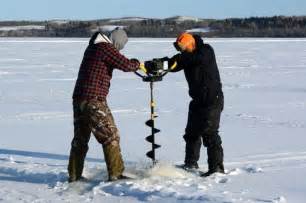My final project is a Ice Thickness Measuring Device. At first i wanted it to be mobile (with wheels) and remote controlled, but that part i skipped halfway the fabacademy.
So what is it about?
[Dutch (toer)skating)(https://en.wikipedia.org/wiki/Tour_skating#Dutch_(toer)skating)
In the Netherlands, the Dutch skating is called Toerschaatsen, where skaters follow marked routes on frozen canals and lakes, which are coordinated by the Royal Netherlands Skating Union.
Despite its maritime climate in which real cold winters are rare, skating is traditionally the most popular winter pastime in the Netherlands even if many speed skating competitions have been moved indoors. Thousands of Dutch leap at the chance in cold winters to tie up their skates and glide across frozen lakes and canals, and sports stores all over the country sell out their skates.
Dutch skating tracks
The Netherlands is home of Elfstedentocht, a 200 km distance skating race of which the tracks leads through the 11 different cities in Friesland which is a northern province of the Netherlands.
Skate tracks on natural ice are maintained by the towns and communities, who take care of the safety of the tracks.
In my little town called Watergang, i’m one of the inhabitants that is responsible for the safety of the tracks of the waterland tourtocht, which was first organized in 1917, and was therefore the 2nd skating tour on natural ice after the elfstedentocht.
The rest is a description over time, about thoughts i had for the device. At the end it was a complete other project than i could imagine here. So i keep these notes for archiving purposes.
Ideas
MITD - Mobile Ice measuring Thickness Device
As icemaster for the Waterland toertocht, skating on natural ice, i’m responsible for checking the thickness of the ice on a part of the route. This is normally done by making a whole in the ice with an axe or drill and measure the thickness by hand.


I want to look into the possibility’s to measure the ice thickness without destroying the ice. And make it mobile and light, so it saves me and my colleges a wet suit ones in a while. It should also be able to measure realtime and transmit the ice thickness and location. It should give us as icemasters a better overview on the thickness of the ice on the whole route. Till now we only measure on spots were we think we get a average of the thickness on the whole route. And we measure on spots where we know the ice is thin.
Why this is a nice project as the final project for my fabacademy 2018:
thoughts on measuring
some stuff found:
http://forum.arduino.cc/index.php?topic=137901.0
- speed of sound in ice (~3400 m-sec-1)
- speed of sound in water(about half the speed in ice)
So, the measured travel time in a few inches of ice will be a few microseconds. This will require some work to time with the Arduino board. Also, the transceiver will need to be a higher frequency than the normal hobby-style transceiver, around 5 MHz.
This looks like something i want to make. It’s not open, and there is hardly any documentation on how it work. But from what i got from their website it’s based on UWBS (ultra wide band signals).
Ice meter Picor-Ice is a device for contactless measurement of ice thickness, snow in real time at a point, in motion, control of the safety of movement over frozen reservoirs, identification of dangerous places. http://uwbs.ru/?lang=en
Ice thickness measurement exp.1 https://www.youtube.com/watch?v=cayYsnFsneQ
I found this book somewhere on the web “Small and Short-Range Radar Systems”. Might be an interesting read.
Main thought is that this radar stuff is a bit to much to learn for the final project….
Thickness Measurement Device Using Ultrasonic Sensor and Arduino https://www.youtube.com/watch?v=V_qj12WwMNI
How to use inexpensive transducers for ultrasonic measurement https://www.youtube.com/watch?v=ZtUkt8Q4EJE ‘
if {
* SONAR
- IR
- Ultrasonic sound
} = 0
then {
* drill
- axe
- Centimetre
- water sensor
}
Resources
-
The Use of SONAR to Measure Ice Thickness by John M. Killen and John S. Gulliver September 1991
-
Design and Prototype of a Freshwater Ice Thickness Measuring Device
-
Measure and Record Ice Depth Quickly and Accurately with the IceTec8 Precision Ice Measurement Tool
-
simular project discussed on reddit i
thoughts on mobile
The surface of the ice is always changing. Sometimes there is snow, sometimes water. It is almost never mirror-smooth. So i have to investigate in what would be the smartest form of mobility.

remote controlled or guidance / programmed to follow a track?
thoughts on communication
- location gps
- wifi / lora / 433Mhz
What if…?
- going through the ice
- being stuck
- caught by a bug
End if …?
So thoughts of my final project changed over time. First i focussed on Ultrasonic sound for measuring the ice. During the input devices week i could measure thickness of ice but not thicker than about 5cm which is not enough. During a review Niel Gershenfield suggested to focus on impact hammering with piezo elements.
I made some tests, with piezo’s and a hammer to see if i could work.
Finally i made sketch how the divice should look like:
